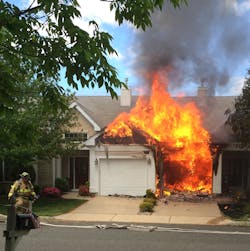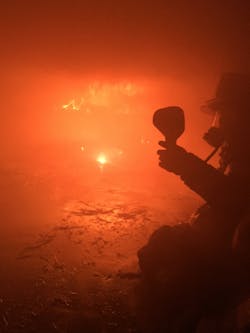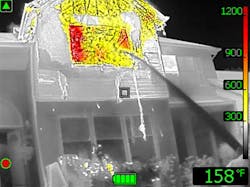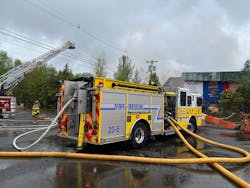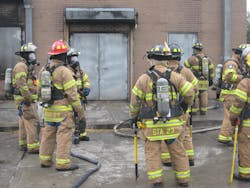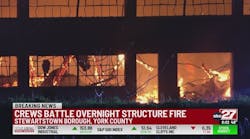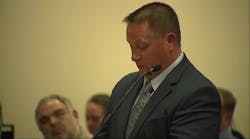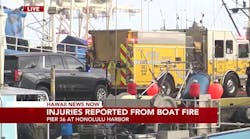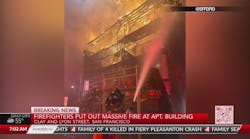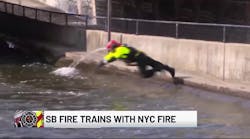The traditional playbook
Indoctrination into the fire service includes a significant level of training, followed by continuing education. Entry-level training has increased on many levels but has remained stagnant in critical topics. For example, in the state where I reside and work, a firefighter candidate who completes Level 1 and Level 2 programs participates in more than 275 hours of training, both lecture and hands-on skill-building exercises. That same level of training decades ago amounted to about 120 hours of training. What both programs have in common: three hours of topic-specific fire behavior training. Three hours. That’s it.
Moving beyond the basics, many firefighters continue their education with classes for fire officers, fire inspectors, rescue specialists, hazmat responders, etc. As the list goes on, things change. Structures and building construction change, fuel packages change, composition of fuels changes, equipment changes, technology changes, people change, priorities change, staffing levels change.
It only seems logical that with all of these changes, so should our performance change, to meet the needs and requirements of the incidents that we respond to today. That said, I pose the following questions to the officers who read this column: When was the last time that operational policies and guidelines were reviewed and updated in your department? I also include the following inquiry to instructors/training officers, particularly the ones who are responsible for curriculum development: When was the last time that a program of yours was reviewed and evaluated for accuracy to current acceptable standard practices for fireground operations?
With the need for performance change, adjustments in curriculum and updates to course delivery are required, too. The day of the one-time course completion long passed. To be efficient and successful, continuing education is needed beyond the in-house succession up the ranks or the promotional exam that was taken years ago for career advancement. Now, many departments have policies, guidelines and directives that determine how to operate in the fire service. Have these changed as well to meet the needs of today’s performance requirements? We can’t continue to apply tactics for fireground operations that were acceptable decades ago to meet the needs for today’s fireground operations.The modern playbook
Today’s firefighter must be well-versed in the modern “rules of engagement” that influence decision-making on the fireground. Considerable attention to topics such as the following should be the foundation for any current structural firefighting curriculum.
Fire behavior and dynamics. Today’s fuel compositions coupled with a larger volume of air that’s within the compartment result in higher heat-release rate, rapid changes in compartment temperature and significant fire spread.
Compartment properties. Composition, air volume and insulating properties are just three of the variables that influence fire behavior. Considerations on room volume, sloping ceilings and air track management influence not only fire behavior but how the structure reacts to the imposition of combustion properties.
PPE limitations and exposure. Moving beyond properly donning and working in gear is necessary. Knowing the limitations and capabilities of the protective ensemble helps to keep firefighters safe. A focus must be placed on cleaning and maintaining gear not only for safety on the fireground but also within the station, to avoid exposure to fireground contaminants.Actionable intelligence. Recently, three questions were posed to some current officers who were taking a strategy and tactics program: What variables do you use that support your decision for an offensive operation? What are your parameters to switch to a defensive posture? What facts would lead an initial-arriving company officer to consider a transitional attack prior to making entry?
This “actionable intelligence” should be based on key information that’s factual on scene, including: current fire behavior/dynamic events; fuel load (contents and building); air track management (flow path); accessibility for suppression; thermal imager data (survivability, smoke properties, compartment behavior, etc.).
Coordination of functions. Can the responding resources safely and efficiently coordinate the multiple functions of suppression simultaneously? If not, fire control must become the No. 1 priority, and other functions must be performed sequentially.
Fire-specific considerations. Strategy and tactics aren’t a one-size-fits-all playbook. Many times, tactical considerations are specific to an occupancy. How a department fights a fire in a residential dwelling would be much different than how that same department fights a fire in a large-space building or a commercial building. Training on fighting fires in every type of occupancy that the department responds to is paramount for success.
Where does a department look for guidance to address these concerns? Several classes and programs are delivered on the local and virtual level, and many of them reflect the current data and scientific conclusions that are being proven by respectable organizations. A substantial resource in this area is NFPA 1700: Guide for Structural Fire Fighting. The document is a thorough review of the science that can aid in addressing fire control and suppression in varying types of structures. It also ties together with strategic and tactical considerations that must be made on the fireground.
NFPA standards have been referenced by professionals as evidence of the standard of care and acceptable practices for the fire service, and NFPA 1700 lists these practices for structural firefighting.Embracing the new playbook
When it comes to making changes in the fire service, it usually is met with resistance and discomfort. Most deterrents come from traditions, firehouse culture and/or the acceptance of “that’s the way things are done around here.” Change, although difficult at times, can be essential for our success. Bringing all of the stakeholders together to discuss the implementation of improved operations will prove beneficial, so all parties have some influence toward the end result. This includes members from all levels of the organization—staff-level members, management-level representatives, subject matter experts, and even training officers and academy instructors. Policies and procedures for best practices must be developed, and training on these guidelines must be delivered.
Making the transition to these new practices should follow a timetable for training and practice. This should include policy review and hands-on applications to fine-tune the operations. Enough time should be built into the transition to adjust accordingly and to revisit areas as needed. After-action reports from incidents that included the implemented changes are vital to aid in reviewing what’s working and what must be adjusted.
Progress requires change
As much as firefighting is a hands-on, physical, performance-driven profession, there still is a necessity to understand the application of the theory and science of combustion for fireground operations to be performed safely and efficiently. Changes in construction, fuel characteristics and compartment properties resulted in data that show the need for changes in the way that fire departments operate on today’s fireground. For a department to survive within these changing parameters, it must change how it operates. Progress in any organization or function is impossible without change, and the successes that are experienced on the fireground should reflect the ability of a department’s members to accept that lesson.
